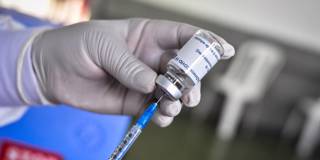While wealthy countries ease COVID-19 restrictions and welcome a return to normal life, many low-income countries are still struggling to get vaccines into people’s arms. The longer they remain short of the 70% immunization target, the more chances the virus will have to acquire dangerous new mutations.
GENEVA – History has shown that some of the most dangerous periods of pandemics come when life returns to normal too soon. A century ago, a premature “all clear” helped the second wave of Spanish influenza claim far more lives than the first, after a more virulent strain emerged. Today, many G7 and G20 countries are relaxing COVID-19 restrictions and shifting their focus away from pandemic response to pandemic prevention and preparedness (or to other issues entirely). But until every country achieves its national vaccination target, we cannot know whether we are out of the woods.

GENEVA – History has shown that some of the most dangerous periods of pandemics come when life returns to normal too soon. A century ago, a premature “all clear” helped the second wave of Spanish influenza claim far more lives than the first, after a more virulent strain emerged. Today, many G7 and G20 countries are relaxing COVID-19 restrictions and shifting their focus away from pandemic response to pandemic prevention and preparedness (or to other issues entirely). But until every country achieves its national vaccination target, we cannot know whether we are out of the woods.